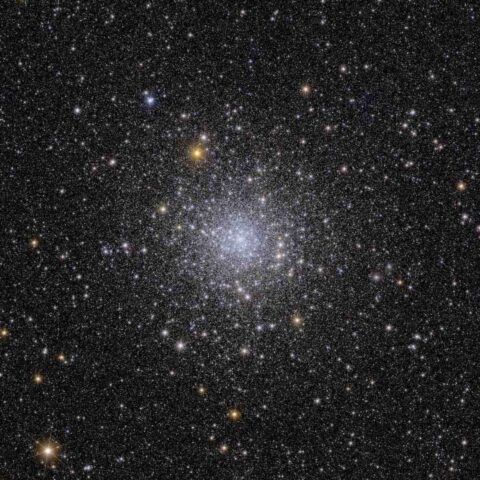Raj Sundaresan Contributor Raj Sundaresan is CEO of Altimetrik and a seasoned technology and business leader with extensive experience in cultivating successful product development teams around the globe. […]
Zuckerberg shot down multiple initiatives to address youth mental health online, claims a new lawsuit
Newly unsealed documents in a lawsuit against Meta outline a history of rejecting opportunities to address youth mental wellbeing.

Still embroiled in lawsuits over the company’s slow move to address its platforms’ effects on young users, Meta CEO Mark Zuckerberg is now under fire for reportedly blocking attempts to address Meta’s role in a worsening mental health crisis.
According to newly unsealed court documents in a Massachusetts case against Meta, Zuckerberg was made aware of ongoing concerns about user mental wellbeing in the years prior to the Wall Street Journal investigation and subsequent Congressional hearing. The CEO repeatedly ignored or shut down suggested actions by Meta’s top executives, including Instagram CEO Adam Mosseri and Facebook’s president of global affairs Nick Clegg.
Meta’s moderation failures incite hate and human rights abuses, according to Amnesty International
Specifically, Zuckerberg passed on a 2019 proposal to remove popular beauty filters from Instagram, which many experts connect to worsening self image, unreachable standards of beauty, and perpetuated discrimination of people of color. Despite support for the proposal among other Instagram heads, the 102-page court document alleges, Zuckerberg vetoed the suggestion in 2020, saying he saw a high demand for the filters and “no data” that such filters were harmful to users. A meeting of mental health experts was allegedly cancelled a day before a meeting on the proposal was scheduled to take place.
The documents also include a 2021 exchange between Clegg and Zuckerberg, in which Clegg forwarded a request from Instagram’s wellbeing team asking for an investment of staff and resources for teen wellbeing, including a team to address areas of “problematic use, bullying+harassment, connections, [and Suicide and Self-Injury (SSI)],” Insider reports.
While Clegg reportedly told Zuckerberg that the request was “increasingly urgent,” Zuckerberg ignored his message.
The Massachusetts case is yet another legal hit for Meta, after being lambasted by state governments, parent coalitions, mental health experts, and federal officials for ignoring internal research and remaining complicit in social media’s negative effect on young users.
On Oct. 25, a group of 41 states and the District of Columbia sued Meta for intentionally targeting young people using its “infinite scroll” and algorithmic behavior and pushing them towards harmful content on platforms like Instagram, WhatsApp, Facebook, and Messenger.
In 2022, Meta faced eight simultaneous lawsuits across various states, accusing Meta of “exploiting young people for profit” and purposefully making its platforms psychologically addictive while failing to protect its users.
Meta’s not the only tech or social media giant facing potential legal repercussions for its role in catalyzing harmful digital behavior. The state of Utah’s Division of Consumer Protection (UDCP) filed a lawsuit against TikTok in October, claiming the app’s “manipulative design features” negatively effect young people’s mental health, physical development, and personal life. Following a similar case from a Seattle public school district, a Maryland school district filed a lawsuit against nearly all popular social platforms in June, accusing the addictive properties of such apps of “triggering crises that lead young people to skip school, abuse alcohol or drugs, and overall act out” in ways that are harmful to their education and wellbeing.
Since the 2021 congressional hearing that put Meta’s youth mental health concerns on public display, the company has launched a series of new parental control and teen safety measures, including oversight measures on Messenger and Instagram intended to protect young users from unwanted interactions and reduce their screen time.
Prime members can now get a One Medical membership for $9/month
Amazon announced today a new One Medical membership benefit for Prime members, giving them access to affordable healthcare services for $9 per month or $99 annually. Originally $199 […]
Pioneering spacecraft’s first images will leave you starstruck
The European Space Agency’s Euclid mission has revealed the first images captured by the spacecraft, which seeks to investigate one of the most mysterious parts of the cosmos: dark matter.

There’s a new spacecraft in town.
The European Space Agency’s Euclid probe — launched in 2023 and packing a high-resolution 1.2-meter (four-foot) wide telescope — is designed to capture “razor-sharp” views of the cosmos, and the craft just beamed back its first images. They teem with brilliant stars and galaxies.
“We have never seen astronomical images like this before, containing so much detail. They are even more beautiful and sharp than we could have hoped for, showing us many previously unseen features in well-known areas of the nearby universe,” René Laureijs, ESA’s Euclid project scientist, said in a statement. “Now we are ready to observe billions of galaxies, and study their evolution over cosmic time.”
The Euclid images are highly detailed because the mission’s scientists are investigating a profoundly elusive, though omnipresent, target: dark matter. Astronomers know dark matter exists, because it gravitationally influences the objects we can see, but they don’t know what it is. “This might be a surprise, but we don’t know what most of the universe is made of. Seriously, we don’t,” NASA explains.
Astronomers suspect that a whopping 95 percent of the universe is dark matter and energy. To better grasp it, cosmic researchers need to observe the precise “shapes, distances, and motions of billions of galaxies out to 10 billion light-years,” the ESA explains.
“We have never seen astronomical images like this before, containing so much detail.”
These first images, showing a diversity of galaxies and cosmic objects, prove the craft can capture these detailed cosmic views.

Credit: ESA / Euclid / Euclid Consortium / NASA // Image processing by J.-C. Cuillandre (CEA Paris-Saclay) / G. Anselmi / CC BY-SA 3.0 IGO

Credit: ESA / Euclid / Euclid Consortium / NASA // Image processing by J.-C. Cuillandre (CEA Paris-Saclay) / G. Anselmi / CC BY-SA 3.0 IGO

Credit: ESA / Euclid / Euclid Consortium / NASA // Image processing by J.-C. Cuillandre (CEA Paris-Saclay) / G. Anselmi / CC BY-SA 3.0 IGO

Credit: ESA / Euclid / Euclid Consortium / NASA // Image processing by J.-C. Cuillandre (CEA Paris-Saclay) / G. Anselmi / CC BY-SA 3.0 IGO

Credit: ESA / Euclid / Euclid Consortium / NASA // Image processing by J.-C. Cuillandre (CEA Paris-Saclay) / G. Anselmi / CC BY-SA 3.0 IGO
The Euclid craft orbits the sun about 1 million miles from Earth, similar to the James Webb Space Telescope, a mission investigating some of the earliest galaxies in the universe, curious exoplanets (planets beyond our solar system), and even objects close to Earth.
Now that Euclid is capturing exceptional images of the cosmos, the real mission begins.
“In the coming months, scientists in the Euclid Consortium will analyse these images and publish a series of scientific papers in the journal Astronomy & Astrophysics, together with papers about the scientific objectives of the Euclid mission and the instrument performance,” Yannick Mellier, an astrophysicist working on the mission, said in a statement.
Best AI text and speech toolkit deal: 80% off
A lifetime license to the Jott Pro AI Text and Speech Toolkit is on sale for £32.82, saving you 80% on list price.

TL;DR: A lifetime license to the Jott Pro AI Text and Speech Toolkit is on sale for £32.82, saving you 80% on list price.
While humans have always led busy lives, it seems with the advancement of technology, we are expected to do more and more within a single day. So, any tips and tricks for saving time are most welcome. Wouldn’t it be lovely to have a way to cut out the tedious work of note-taking, transcribing, and translation so you might have a little extra time to relax?
With the AI boom already here (according to The Wall Street Journal), some things have changed for the better. The Jott Pro AI Text and Speech Toolkit is specialised software that could save you time when it comes to matters of text and speech, and a lifetime license is currently on sale for just £32.82 — and it has a lot of valuable capabilities.
If you consistently need to dictate emails or reports or take detailed notes during classes or meetings, Jott can help you. With its AI capabilities, Jott was made to transform any spoken word into written text without missing a beat.
Using state-of-the-art neural AI tech, this software can also turn any text into a high-quality, lifelike human voice, which is excellent for those with vision impairments. It can also save time by allowing you to listen instead of read while on the go.
Another helpful feature lets you extract images and text from files like PDFs, eliminating the need for manual transcription, as Jott converts it to editable text for you.
While this license is available on unlimited devices, this Jott Pro deal is only applicable to new customers. You’ll get 120 minutes of speech-to-text per month, 100,000 characters per month of text-to-speech, 100,000 characters per month for transcription, and 100,000 characters per month for translation, along with all of the Jott features.
This lifetime license includes updates and improvements as they become available, which help keep the tech you’re using current. Made to be user-friendly and highly accurate, it could be the difference between making it home in time for dinner and being stuck in the office.
Get a lifetime license to the Jott Pro AI text and speech toolkit for £32.82.

Opens in a new window
Another room-temp superconductor bites the dust
After a raucous year of supposed breakthroughs in superconducting physics, 2023 is looking like it’s going to end with a whimper. This summer, LK-99 was the room-temperature superconductor […]
This spinal implant tech could restore mobility to Parkinsons patients
People with Parkinson’s disease are being diagnosed earlier and living with the condition for longer periods as treatments evolve, but one stubborn late-arriving symptom is trouble walking. A […]
Flexport gobbles up Convoy’s assets, Revel pulls the plug on mopeds and UAW sets its sights on Toyota and Tesla
The Station is a weekly newsletter dedicated to all things transportation. Sign up here — just click The Station — to receive the newsletter every weekend in your inbox. Subscribe for […]










